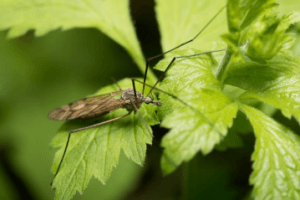
There are more than 3000 species of mosquitoes around the globe. However, there are species of mosquitoes that left their marks in history. These species transmit deadly diseases without you knowing it. Among them are the seven different types of mosquito pests found at home, the diseases they carry, their habitats, and how to keep them away.
Quick Overview
- The Aedes Aegypti
- The Aedes Albopictus
- The Anopheles Mosquito
- The Culex Quinquefasciatus
- Culex Pipiens
- The Aedes sollicitans
- The Aedes Taeniorhynchus
The Aedes Aegypti
The Aedes Aegypti is one of the species of Aedes mosquitoes that originated in tropical countries but has spread all over the world. It is known to spread yellow fever and dengue. These species are also known as yellow fever mosquitoes in the US.
Characteristics and behavior
The Aedes Aegypti is known for its black and white spot present in all Aedes types of mosquitoes. They are also known to bite early in the morning or at dusk, which is unusual for mosquitoes. They also prefer dark and damp settings. Although they usually bite during those hours, they can still bite any time of the day if disturbed. The females need blood so they can lay their eggs. They also prefer stagnant but clear water rather than murky ones.
Solution
Remove objects that they can use to lay eggs like old tires, flower vases, and upside-down bottle caps. If you cannot remove the water, add a generous amount of salt to the water. It will kill the eggs. When going outside, wear long sleeves and pants or apply a mosquito repellent lotion.
The Aedes Albopictus
The Aedes Albopictus is similar to the Aegypti with its white stripes on their body. These mosquitoes also belong to the Aedes family. They are also known as Asian tiger mosquitoes. Although it originated in tropical countries in Asia, it has now spread all over the world. They also can be a carrier of dengue and yellow fever viruses, chikungunya fever, and in recent studies, the Zika virus.
Characteristics and behavior
The Aedes Albopictus is also similar to the Aedes Aegypti mosquitoes in the sense that they also like to bite during the day, dusk, and dawn. The female mosquitoes also bite humans while the male counterpart is feeding off of nectar. However, unlike Aedes Aegypti, these mosquitoes can adapt to the colder atmosphere. In the US, they have expanded their territory from warm-weather states to colder ones.
Solution
Wear long sleeves and pants if you are going out early morning or right before it gets dark. If you are not allergic to mosquito repellent lotion, apply some to the exposed areas of your body. If you are, try sticking mosquito patches on your clothes. These should mask your scent and will make it harder for mosquitoes to find you.
The Anopheles Mosquito
The Anopheles mosquito, or in layman’s terms, Malaria mosquitoes is dark brown and is the primary carrier of malaria fever; hence the name. They are dark brown and live near humans. They love laying their eggs in freshwater, and they usually use collected rainwater to do that.
Characteristics and behavior
Like other mosquitoes, males feeding on nectars while the females need blood meals to lay eggs. However, unlike other mosquito eggs that form a raft, Anopheles mosquito eggs are individually floating in the water.
Solution
Remove all possible things that mosquitoes can use to lay their eggs, especially after it rained. In addition, you can also plant lavender, marigold, and oregano plants in your garden. They not only smell nice; they also help you repel mosquitoes.
The Culex Quinquefasciatus
The southern house mosquito or Culex Quinquefasciatus is a carrier of avian malaria, West Nile fever, and possibly the Zika Virus.
It is also known to be a carrier of St. Louis encephalitis and other diseases. The southern house mosquito is brown, with its head being light brown.
Characteristics and behavior
The southern house mosquitoes feed on nectar. However, females will seek a blood meal after mating so they can lay their eggs. They usually feed on birds but can also bite humans. The females like to lay their eggs in stagnant dirty water where there are organic materials in water for the larvae to feed.
Solution
Make sure that your drainage is well covered and not stagnant. Cover septic tanks and other water leaks that they might use as a breeding ground. You can also spray insecticide to these areas but make sure children and pets are away.
Culex Pipiens
The Culex Pipiens or common house mosquitoes have the largest population in areas where humans also live. As the name suggests, these are mosquitoes that reside in areas where the human population is. They are also carriers of West Nile fever, Zika Virus, and avian malaria.
Characteristics and behavior
They rely heavily on sugar to store fats during winter. The females need blood to lay eggs. Although they also prefer birds as their food source, they also feed off humans and mammals like cattle. Like another subgenus of Culex, females also lay eggs on dirty, stagnant water.
Solution
Culex Pipiens can be seen in basements and sheds when the weather is cold. Remove all possible things that mosquitoes can lay their eggs. Clean them regularly.
The Aedes sollicitans
The Aedes Sollicitans are also known as the Eastern Saltmarsh Mosquitoes. They are golden brown and have a white band. It originated on the seaboard of the US and Canada, where they reside.
Characteristics and behavior
The Aedes Sollicitans bite in the morning and at dusk like other species of Aedes. However, they can bite any time of the day if you step into their territory. Aedes Sollicitans lay their eggs in stagnant saltwater. Females need a blood meal before they can lay their eggs, and mammals, humans, and fish are their hosts.
Solution
Avoid going to marshes when you are near the beach or apply mosquito repellent and wear pants and long sleeve clothes.
The Aedes Taeniorhynchus
The Aedes Taeniorhynchus has black with white bands on its body and legs. They are also called They are native to the eastern coasts in the US. Although black saltmarsh mosquitoes. Even though they lay eggs in the marsh areas, these mosquitoes can travel far and can be seen all over Florida. The black saltmarsh mosquitoes carry viruses that affect dogs, horses, and humans.
Characteristics and behavior
The black salt marsh mosquitoes lay their eggs in moist soil and not in the water directly. As with other species of mosquitoes, the female requires a blood meal after mating for the eggs. The black saltmarsh mosquitoes feed on mammals and humans. They are also the reason behind the consumption of insecticides in Florida.
Solution
There are many previous control strategies that the government has provided in regards to the salt marsh mosquitoes. However, you can protect yourself and your family from these mosquitoes by using mosquito repellent and insecticides.


